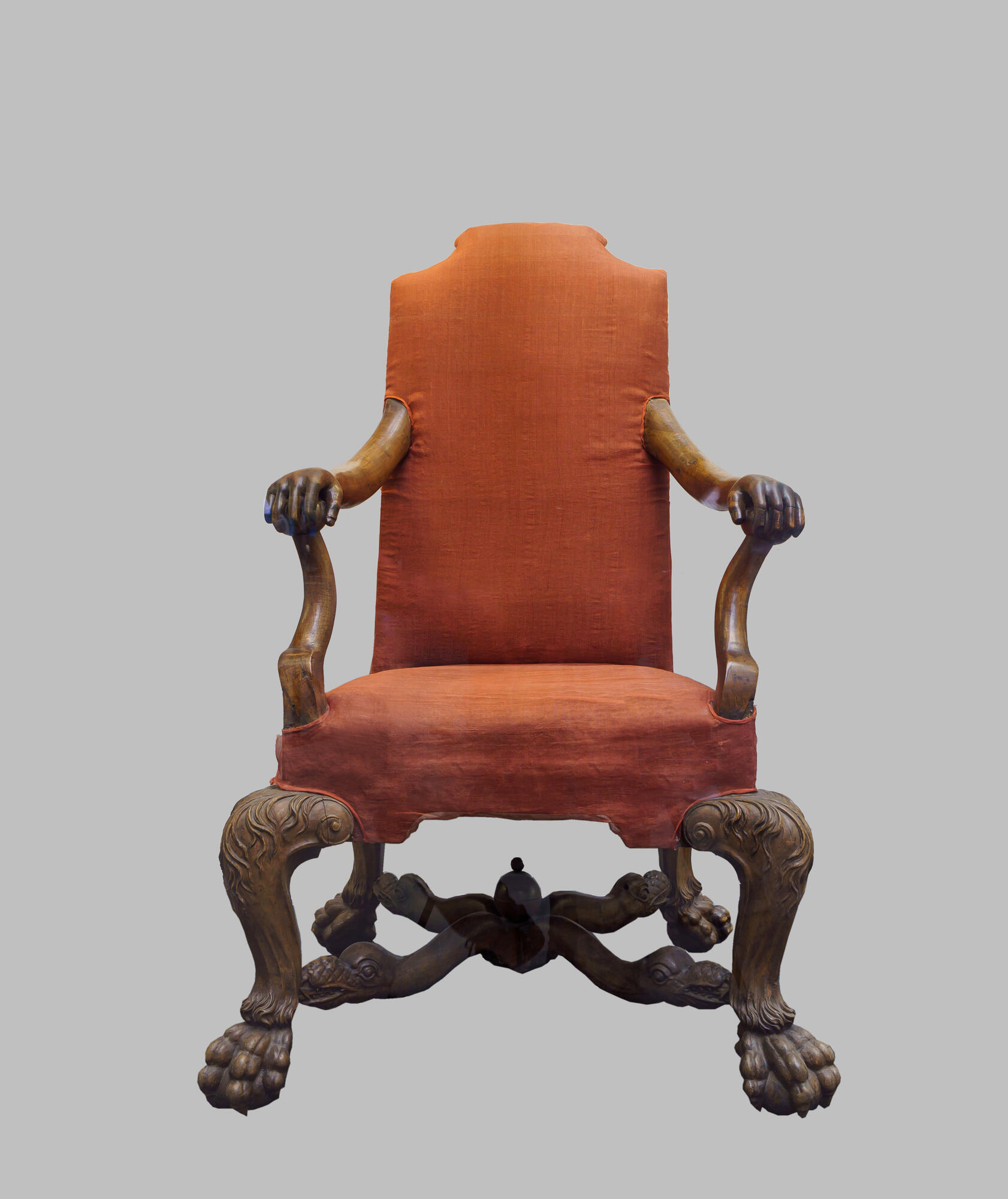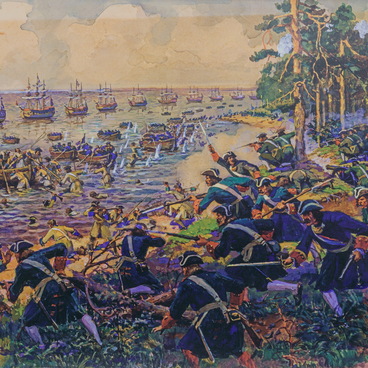Peter the Great’s large admiralty chair is an example of unique furniture in the early Baroque style.
In the 17th and early 18th centuries, oak was the main type of wood used for manufacturing expensive furniture. Mastering European traditions, Russian craftsmen were guided by the Dutch and English examples of the late 17th century, which is why the furniture of the Petrine era was practical, strong, and functional. The decoration was modest, and the structural parts were often carved. Methods of finishing included turning, toning, and wax polishing. Legend has it that Peter the Great himself took part in the turning work during the manufacturing of this chair.
Peter the Great’s chair is made of toned and wax-polished oak wood in the style of early Baroque. The armrests are carved in the shape of arms resting upon arched posts. The S-shaped legs are designed in the shape of paws with claws holding orbs. At the top, the legs are decorated with a floral pattern, and at the bottom connected with diagonal stretchers shaped as bird heads with a chiseled orb in the center. The back has canted corners and a slightly bent and rounded upper edge. Both the back and the seat are upholstered with red canvas. At the bottom, the seat is upholstered with white canvas with six bound lace ribbons, improving the firmness of the seat. The canvas is covered with toned restoration fabric.
According to the “General list of items that entered the Museum after 1823 (until May 1833)”, by Order of Executive Expedition No. 580 of March 7, 1825, the Museum received,
In the 17th and early 18th centuries, oak was the main type of wood used for manufacturing expensive furniture. Mastering European traditions, Russian craftsmen were guided by the Dutch and English examples of the late 17th century, which is why the furniture of the Petrine era was practical, strong, and functional. The decoration was modest, and the structural parts were often carved. Methods of finishing included turning, toning, and wax polishing. Legend has it that Peter the Great himself took part in the turning work during the manufacturing of this chair.
Peter the Great’s chair is made of toned and wax-polished oak wood in the style of early Baroque. The armrests are carved in the shape of arms resting upon arched posts. The S-shaped legs are designed in the shape of paws with claws holding orbs. At the top, the legs are decorated with a floral pattern, and at the bottom connected with diagonal stretchers shaped as bird heads with a chiseled orb in the center. The back has canted corners and a slightly bent and rounded upper edge. Both the back and the seat are upholstered with red canvas. At the bottom, the seat is upholstered with white canvas with six bound lace ribbons, improving the firmness of the seat. The canvas is covered with toned restoration fabric.
According to the “General list of items that entered the Museum after 1823 (until May 1833)”, by Order of Executive Expedition No. 580 of March 7, 1825, the Museum received,


